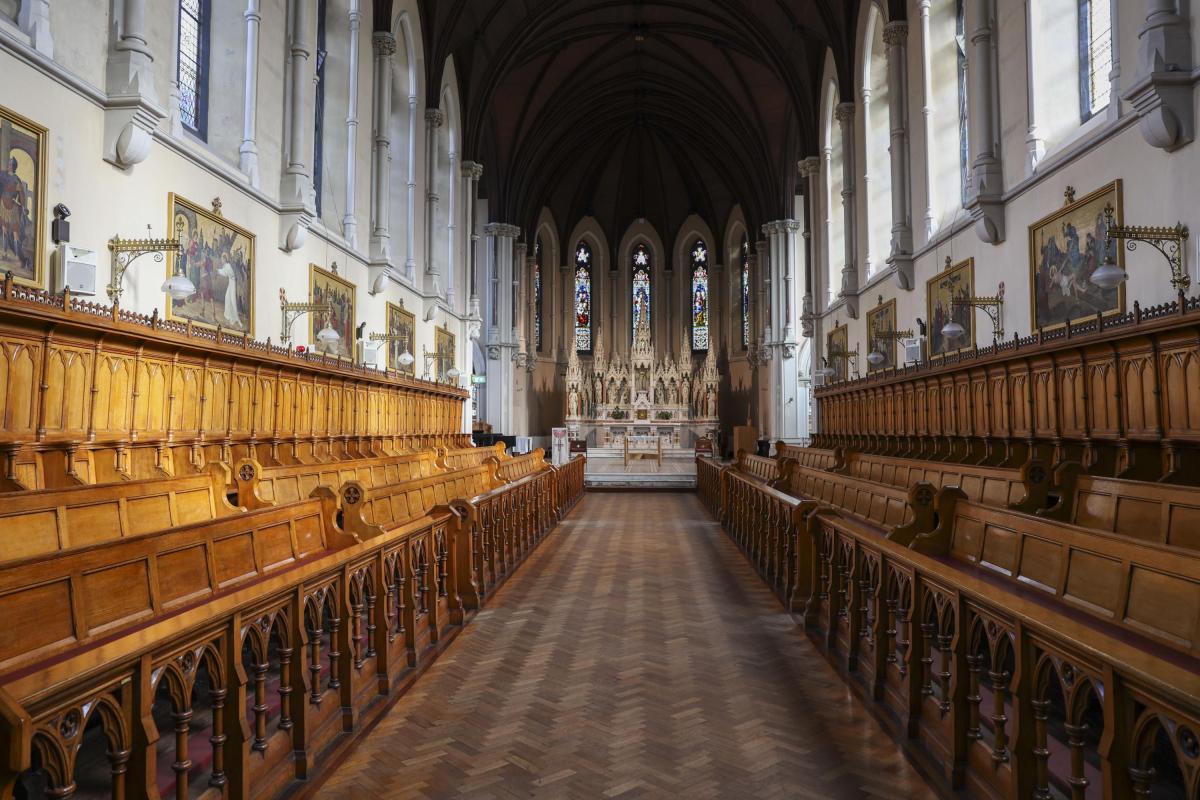

Smart DCU complete scan of All Hallows Chapel in 3-D capture project
The scan comes as part of the ongoing Smart DCU Digital Twin project. The initial phase of this project, the creation of a digital version of the Glasnevin campus, was completed in August 2021.
This digital copy will be a resource for students and facilities staff to use space on campus more efficiently. The team will eventually put the scans together using the video game software Unreal Engine to create a mobile app.
Possible uses include those with sensitivity to noise finding quiet spaces or quiet routes across campus based on input from noise monitoring sensors.
SmartDCU project consultant Wayne Rutherford said
"For people who encounter the digital twin of DCU’s campuses first, we want to create a sense of deja vu when they actually arrive.”
Wayne made the scan using Luma AI, a mobile 3-D capture application. He experimented with other software, and with different angles and distances to achieve the finished product in the video. Smart DCU’s aim is to create high fidelity scans in the most efficient way possible.
“The technology is moving very fast. The software I used takes a series of images and uses AI to stitch them together. I didn’t use any ladders or drones in scanning the space.” Rutherford said.
The original chapel at All Hallows was designed by Dublin architect James Joseph McCarthy.
However, it burned down in the late 19th century and was replaced in 1876. The new chapel designed by George Ashlin is largely in keeping with the Gothic style of the original.
Rutherford initially joined the project as an intern and is now working with SmartDCU as a consultant.
Smart DCU is a collaboration between Dublin City Council and partners Enable, Insight and DCU Alpha. The goal of Smart DCU is to develop, test and trial cutting-edge technology innovations such as the first trial of Hydrogen bus and next generation wifi on campus.
As part of this program, which is utilizing the university campus as a test site to explore and evaluate the latest advancements in smart city solutions, DCU is collaborating with Insight SFI Research Center for Data Analytics (Insight), KTU, and Bentley Systems. This collaborative initiative aims to investigate the power of artificial intelligence (AI) and immersive digital twin technology using DCU as a city microcosm for developing intelligent and sustainable urban spaces. It strives to push the boundaries of digital twins by leveraging Insight’s AI expertise and Bentley’s advanced technology applications in a secure and controlled campus environment, helping guide cities in the strategic deployment of smart city innovations.
“The DCU campus [is] an ideal living laboratory for this purpose, as it replicates the essential features of a real city, including accommodations, roads, retail areas, and other urban amenities, albeit on a smaller scale,” said Kieran Mahon, Smart DCU projects facilitator at Dublin City University.
DCU selected Bentley’s open 3D and reality modeling technology to create a campus model integrated with IoT data, generating an immersive digital twin on the iTwin Platform. Incorporating AI into the digital twin enables a comprehensive, real-time 3D perspective of the campus, facilitating the understanding of the various factors that influence operational efficiency and overall experience of the people on campus. “It’s not just about engaging visualizations or simple gauges, it’s about identifying patterns and mismatches to drive meaningful action,” said Mahon. Using Bentley’s digital twin technology, the team built a 3D campus model and overlaid it with real-time IoT sensor data that can be used for operational efficiency, decision-making, and planning. “By utilizing the Bentley ecosystem, we were able to create a detailed 3D model of the university campus and integrate diverse IoT data feeds from various vendors in a fast, efficient manner,” said Mahon.
Working within Bentley’s iTwin Platform enabled valuable AI insight to be presented in the digital twin. Real-time AI data analysis is conducted, and the resulting insights are presented visually in an immersive digital environment where patterns and discrepancies can be detected, ultimately leading to actionable decisions. This AI-driven digital twin allows for the development of smart and adaptive systems that respond dynamically to changing conditions, optimizing energy usage and enhancing user experiences. “We believe that AI-driven solutions hold the key to unlocking a new era of urban management,” said Mahon. The collaboration with Bentley showcases the potential of digital twins for campuses and cities.
